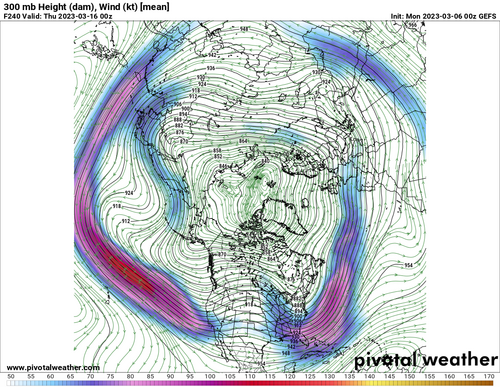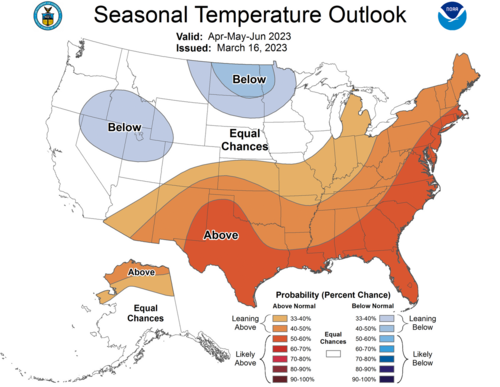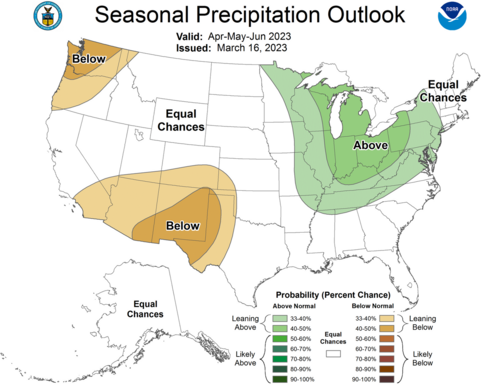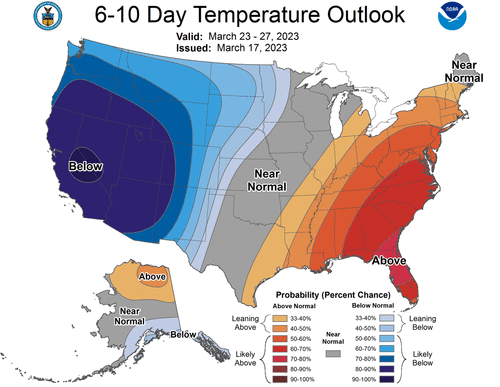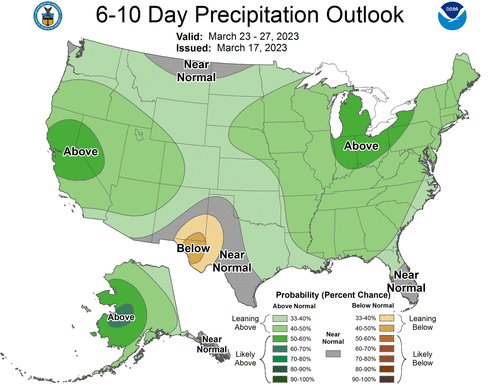I suspect the cause of the early season activity is related to the sudden stratospheric warming (SSW) event we just went through. We're in the late phases of this event, which takes several weeks to process, and it appears the stratospheric polar vortex (SPV) is effectively "rebooting," which suggests the active pattern will taper off within the next few weeks.
That's really all I can glean from what's currently happening. I'm not particularly knowledgable on S2S (sub-seasonal to seasonal) forecasting, and I'm not aware of any reliable methods of predicting overall activity more than a few weeks in advance right now...at least as far as the upper-air Rossby wave pattern is concerned, as that seems to be a top-two driver of overall activity. After all, it is hard to get widespread or predictable severe weather without synoptic scale forcing, even if a great mT airmass is in place!
I've seen others comment on some other factors that can be used to assess the potential for a good year. The big one to me is precipitation and soil moisture anomalies in the EML source region (SW US and N Mexico). While California and Nevada (and parts of Arizona) have been deluged this winter, those areas aren't really in the EML source region. So we have to look further to the southeast. I like the NASA SPORT Land-Data Assimiliation System website for analyzing this group of factors (
Real-time 3km Land Information System over CONUS). The current relative soil moisture in the top 10 cm of soil is below:
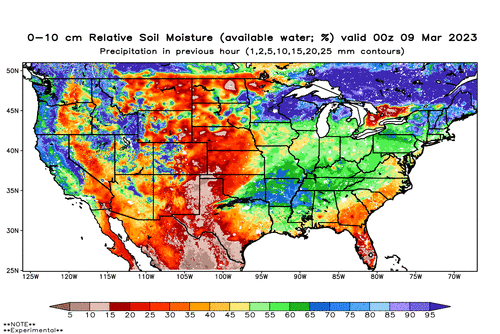
The value of the field is the fraction of available soil moisture that is realized (0% is totally dry soil, 100% is completely saturated soil). This is averaged over the 10 cm depth nearest the ground surface, where moisture access is most immediate. Soil temperature and moisture do have a memory, and the memory is longer in deeper layers since it takes a long time for water and heat to propagate upward towards the surface. Sensible heat flux generally only occurs right at the ground surface (referred to as the "skin" layer, and if you see "skin temperature" it is referring to the temperature right at the ground surface that IR satellite products measure when you look at IR satellite). Latent heat flux can occur directly from the soil surface, but also from plant evapotranspiration. But since most plants have fairly shallow roots, then the uppermost soil moisture will generally provide the highest correlation with potential latent heat flux. So if you're looking for more immediate impacts of soil heat and moisture transfer to the atmosphere, you want to look at the near-surface soil. But the deeper stuff can give you a sense of how "resilient" the upper soil layers will be to a period of high heat and no rain, for example.
Okay, so that's it for the primer on land-atmosphere exchange processes.
What I see is that it is quite dry across the EML source region, this is not necessarily atypical for this time of year. If we look at the soil moisture percentiles instead, we can see if this state is anomalous at all.
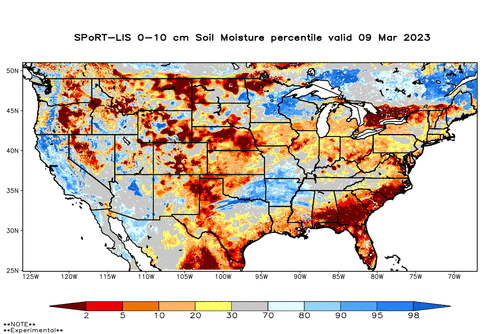
In areas of E NM, W TX, and NE Mexico, it is indeed pretty anomalous. But further west (AZ, NW Mexico) the current soil moisture is anomalously wet. So...a bit of a mixed signal right now. It doesn't help that the recent precipitation anomaly is correlated a lot with this.
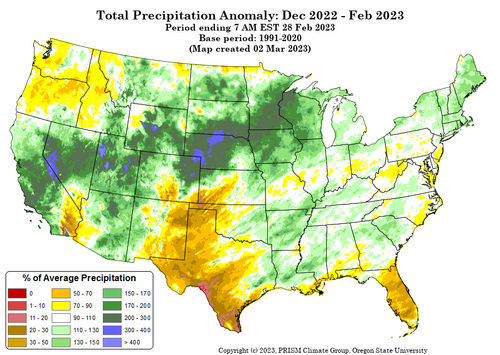
I'd be more excited if that big precip anomaly on the central high Plains was displaced further south. But this signal could bode well for the later season activity further north.
One other resource I like to use (a bit shorter time scale) is Victor Gensini's dynamical SCP statistics forecast from the GEFS forecasts here:
Extended Range Severe Weather Environment Forecasts. You only get about a 2-week lead window on this.
Don't forget about MJO either (
CPC - Climate Weather Linkage: Madden - Julian Oscillation).

The GEFS is actually predicting a massive swing through the phase-8-1-2 range, which is the optimal phase range for active troughiness and storminess in the central US. It doesn't guarantee a stormy pattern, but it sets the stage. We'll see how the next week or two goes as this phase transition occurs and see if an active period accompanies it.
More as it develops.
